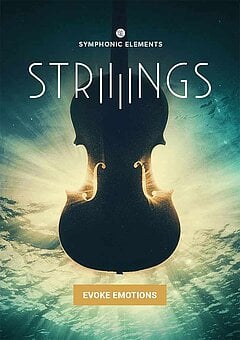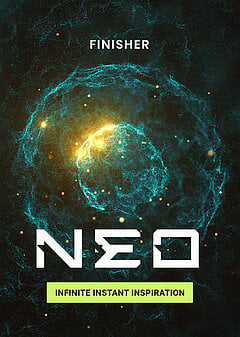The Secret of Every Trailer Soundtrack
If you want to start writing music for movie and game trailers, in this guide we break down the one big thing you need to know — and how to apply it to every single one you write.
JANUARY 3RD, 2021
Trailers provide a unique challenge in that you have to condense potentially 2.5 hours’ worth of entertainment down into 2.5 minutes or less. In order to achieve that, you need a flair for drama and the right technology at your fingertips.
So what’s the big secret?
Put simply, you must keep the energy up through the entire trailer without being repetitive, while also supporting the drama on-screen.
If this seems obvious, bear in mind that it’s not always common practice — it takes discipline to develop the muscle memory to do this automatically, but if you follow the guide below on a regular basis, you’ll gradually commit it to memory (and have a far more enjoyable career in composing trailer music). And matching the drama is something that even experienced composers struggle with!
Great music vs. great trailer music
When writing music for any sort of linear visual media (trailers, films, TV shows, etc.), you’ll have to make musical sacrifices in order to better serve the content on-screen. As musicians and producers, when inspiration strikes, it’s difficult not to go off on a tangent and flesh out a great idea. But writing for visual media has an entirely different endgame: to support the drama on-screen and make it as powerful as possible, which often comes at the expense of the soundtrack. Great music should always be part of your goal, but it must always come second to what’s right for the trailer — even if your client isn’t musically inclined, they’ll know when you’re not prioritizing the action in the trailer. And it’s unlikely they’ll hire you back after that. (You don’t need to worry about this if you’re genuinely making an effort — most people will sense and appreciate this)
This is a very difficult skill to master, and is why many incredible producers and composers don’t make effective film and trailer composers. It requires a lot of practice and almost no one is naturally good at this, but your reward for learning to selectively distance yourself from the need to be ‘musical’ is great client relationships and a lot more projects!
Peaks and valleys
While you need to keep up the energy for the entire trailer so you don’t lose your viewers, that doesn’t mean that everything needs to sound ‘big.’ In fact, if everything sounds big the entire time, pretty soon nothing will! The quieter, subtler moments are what make the climactic moments so strong.
So how do you keep up the energy when things are quieter?
Make sure you’re constantly preserving movement. If there’s a repeating rhythm you use throughout the soundtrack, give it to different instruments. Pass it around the orchestra or to different synths and percussion instruments. Make it quieter and gradually grow it louder, adding more instruments to the rhythm as time goes on — when in doubt, strings will almost always work by default. UJAM’s STRIIIINGS VST plugin was specifically designed to create repeating string rhythms and ostinatos, and it will make this entire process easier and faster. In fact, it contains some of the exact string samples Hans Zimmer’s been using for years from his private library — and many of the ‘best practices’ in trailer scoring come directly from Hans’ huge body of work as a film composer.
Having a consistent rhythm is a great way to control the energy throughout the soundtrack, and it helps guide you throughout the entire process. Also, keep in mind that the soundtrack shouldn’t constantly be either ‘small’ or ‘huge’ — in fact, the majority of the soundtrack should be building from the small moments to the huge ones. This brings us to the topic of transitions.
Transitions
Transitions should never be an afterthought. In fact, trailers might be the only situation in which you can have a constant stream of transitions overlapping throughout the entire soundtrack — since controlling the dramatic energy is so vital, it helps for the audience to feel like the music is always leading somewhere. A good transition implies that there’s going to be a payoff, and its speed and intensity lets viewers know when to expect that dramatic moment.
There are a wide variety of tools that simplify the process of creating transitions — Tonsturm’s Whoosh, Native Instruments’ Rise & Hit, and Output’s Stitch (designed for the Arcade plugin) are all great places to start. Here are a few ‘best practices’ for creating transitions (and this by no means an exhaustive list):
- Massive crescendos
- Pitch rise or portamento
- Upward bandpass or lowpass filter sweep
- Layering (i.e. violins, white noise, synths, cymbal swells, drum rolls, etc. — this might even be the most important aspect of all, as only one or two sounds are generally too weak to provide the energy you need)
Here’s a great video demonstration of how a seasoned trailer composer quickly builds hard-hitting trailer scores and structures the transitions (it’s long, but rich in detail):
Be prepared to spend more time on your transitions than any other aspect of your trailer soundtrack. They’re that important. If they don’t communicate the necessary intensity, the viewer’s attention will immediately begin to falter. Upward movement is everything in trailers, so make sure you’re constantly building it through transitions.
The climax
This is the payoff. The point where all the dramatic energy builds into a single defining moment. Like with transitions, there are some best practices that you’ll typically want to adhere to:
- Make it bassy (you simply won’t be able to achieve a cinematic impact without some subwoofer rumble!)
- Make sure the transition leading into the climax has almost no bass — this will make the climax feel bigger via contrast
- Add way more reverb than you think you need — and then back it off until 1) it no longer dilutes the impact, and 2) the reverb tail cuts off before the next note
- As a follow up, don’t add anything after the big hit, and let the reverb fade to silence; adding more notes immediately after will take away a lot of the ‘oomph’ factor
- It’s very hard to add too many instruments or sound effects here, provided that you mix them appropriately; you’re welcome to add in as many as you like, so long as you make sure that you preserve the punch and clarity (which admittedly becomes increasingly difficult as you add in more layers)
While there’s certainly an art to architecturing cinematic climaxes, most of the legwork is actually done by the transitions that proceed it. Once you reach the climax, your sole duty is to deliver on the promise you’ve been making to the viewers throughout the soundtrack, through your transitions.
An important note on structuring the soundtrack: Consider adding in multiple climaxes throughout the trailer to highlight specific moments on-screen and create more musical variety. But none of them should have anywhere near the power of the final transition + climax. If it’s not way bigger than any of the ones that preceded it, your viewers will be disappointed. You never want to pull out all the stops too early, or the result will consistently be underwhelming.
How to apply this secret
To reiterate: You must keep the energy up through the entire trailer without being repetitive, while also supporting the drama on-screen. This means nailing your builds, transitions, layering, and climaxes consistently while keeping everything in perfect balance.
You’ll also give yourself a far better shot at success if you lay out a skeleton version of the trailer soundtrack before ever focusing on anything in great detail. Create the most pared down version of the soundtrack possible, and then build on top of it. This will mitigate your natural tendency to zoom in on one part of the soundtrack and make it sound great at the expense of the moments all around it (nearly every composer and producer has this tendency).
Work quickly, be willing to iterate through multiple versions, and don’t try to make any of them perfect — stay nimble and be willing to change anything if need be. If you fall in love with part of the soundtrack, you’ll be reluctant to delete it, even if the trailer requires something different. Remember: The client’s needs are the most important, the trailer’s come in second, and the music comes in third. Adopt this mindset, and you’ll be on your way to consistently writing excellent trailer music that keeps earning you more work!
Stay up to date
Sign up and we’ll send you an e-mail with product news and helpful stuff every now and then. You may unsubscribe at any time.
Defy Limits
We develop software solutions that enable people to create, consume and interact with music.




